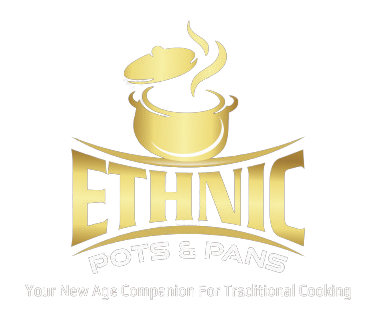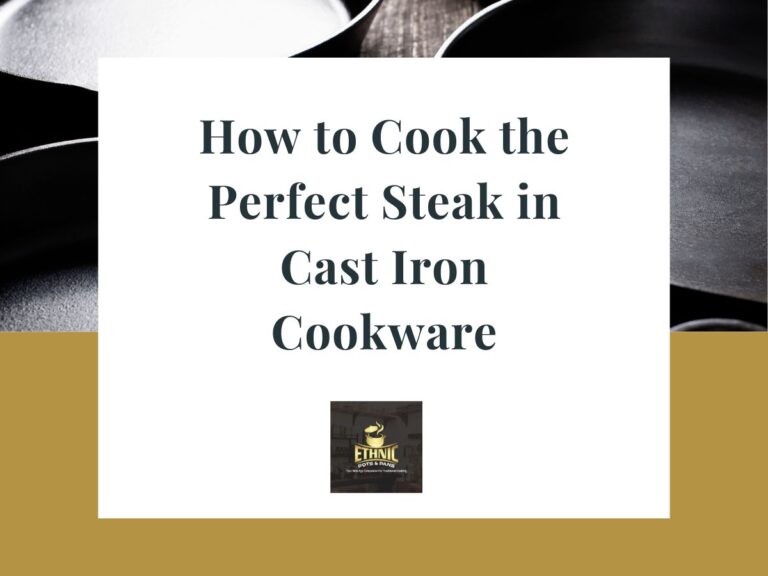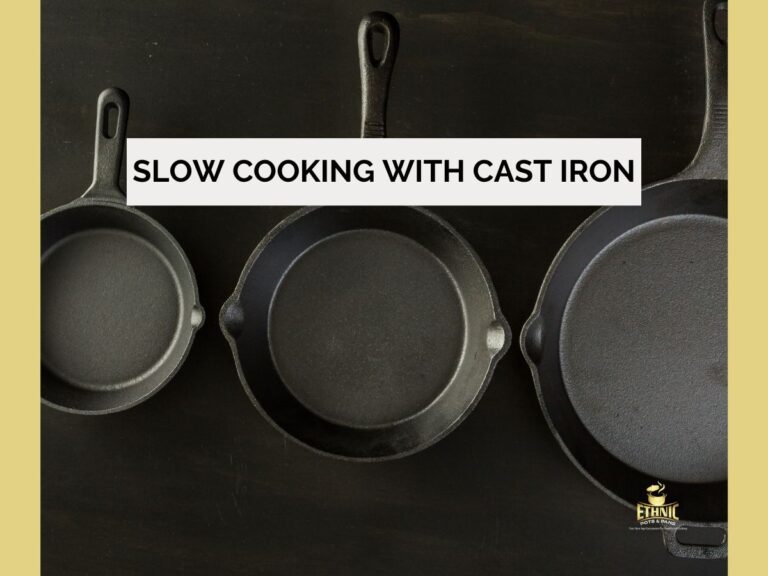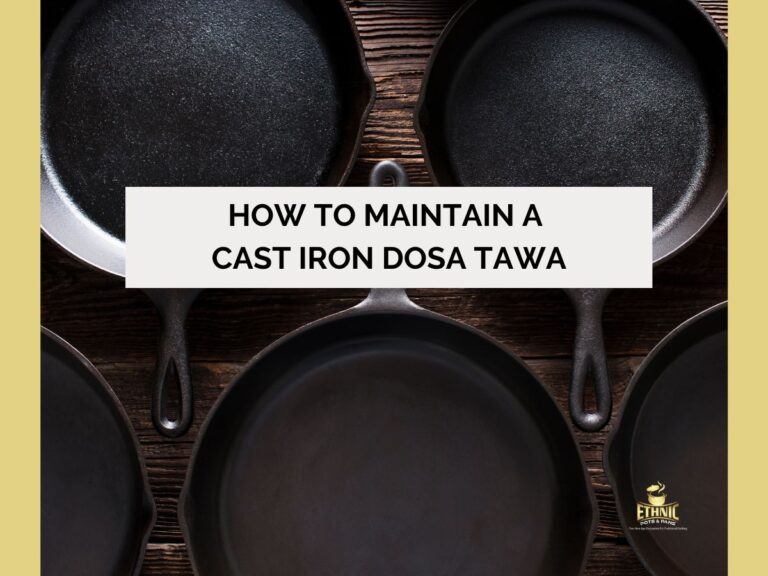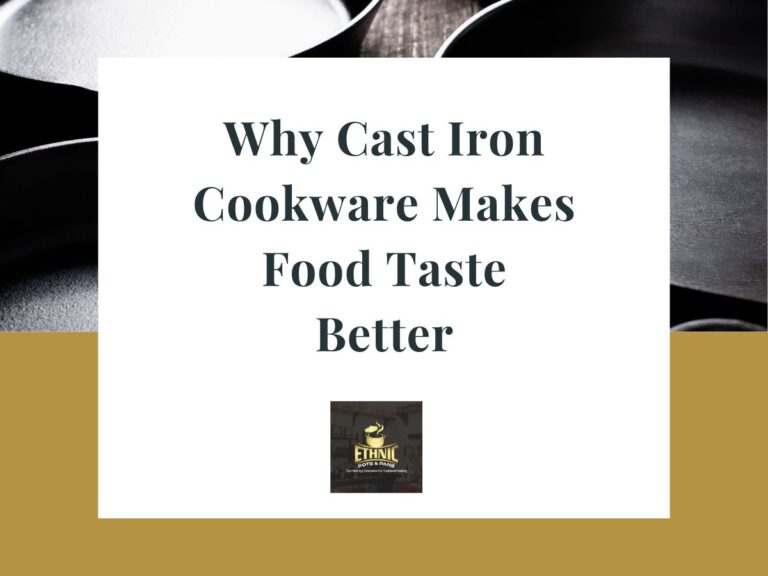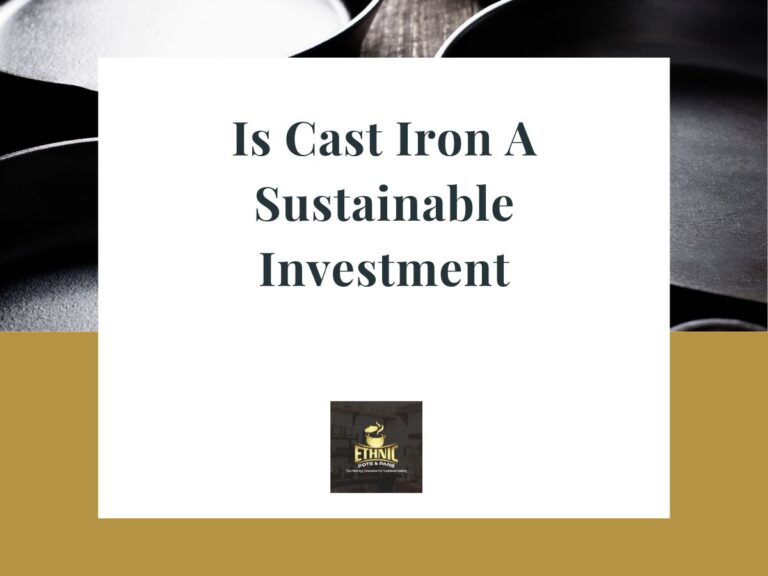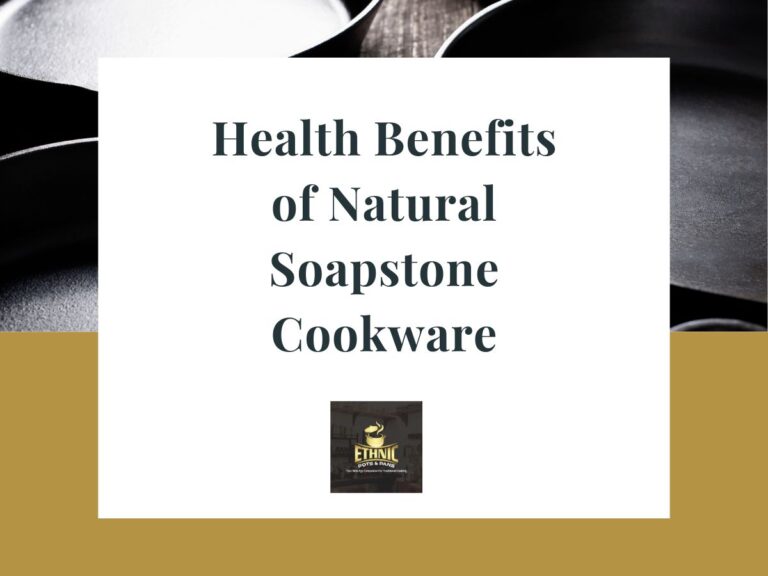Cookware is a critical element in any kitchen, with its ability to directly impact the quality of food, health considerations, and long-term performance. With a variety of cookware options available, cast iron and non-stick cookware have remained two of the most popular choices among home cooks and professional chefs alike. Cast iron cookware, with its robust, timeless design, and ability to enhance flavors over time, is celebrated for its durability and versatility. On the other hand, non-stick cookware, with its easy-to-clean and smooth surface, has found favor for convenience and low-fat cooking.
Choosing between cast iron and non-stick cookware often comes down to personal preference, health concerns, and the type of meals you prepare regularly. In this guide, we’ll explore the strengths and weaknesses of both cookware types, helping you make an informed decision about which one is right for you.
Cast Iron Cookware: The Classic Kitchen Workhorse
Durability and Longevity
One of the most significant advantages of cast iron cookware is its unparalleled durability. A well-maintained cast iron skillet or Dutch oven can last for generations, making it an excellent investment for your kitchen. Unlike non-stick pans, which have a limited lifespan due to their coating wearing off over time, cast iron improves with age. The more you cook with it, the better it gets, thanks to the process of seasoning, where oils bond to the surface and create a natural, non-stick layer.
Versatility in Cooking
Cast iron cookware is incredibly versatile and can be used on almost any heat source, including gas stoves, electric cooktops, ovens, and even open flames. Whether you’re searing a steak, baking bread, or simmering a stew, cast iron can handle a wide range of cooking techniques. Its ability to retain and distribute heat evenly makes it ideal for slow cooking and high-temperature tasks like frying or grilling.
Enhancing Flavor with Seasoning
One of the unique features of cast iron cookware is its ability to develop seasoning. This natural, non-stick layer is created when fats and oils are heated in the pan, polymerizing and bonding to the surface. Over time, this seasoning improves, providing a smooth, non-stick finish that enhances the flavor of your food. Seasoning also adds a layer of protection to the cast iron, preventing rust and wear.
Suggested Reading: Difference Between Cast Iron Cookware and Stainless Steel Cookware
Health Considerations
Cooking with cast iron can also boost your iron intake, as trace amounts of iron leach into the food. This can be beneficial for those who need to increase their iron levels, although it’s generally not enough to cause concern for the average person. Cast iron is also free of synthetic coatings and chemicals, making it a safe and healthy option for cooking at high temperatures.
Maintenance and Care
While cast iron cookware is highly durable, it does require special care. Unlike non-stick cookware, cast iron should not be washed with soap, as it can strip away the seasoning. Instead, it should be cleaned with water and a scrubber, dried thoroughly, and lightly oiled after each use. This maintenance might seem labor-intensive, but it’s a small price to pay for cookware that can last a lifetime.
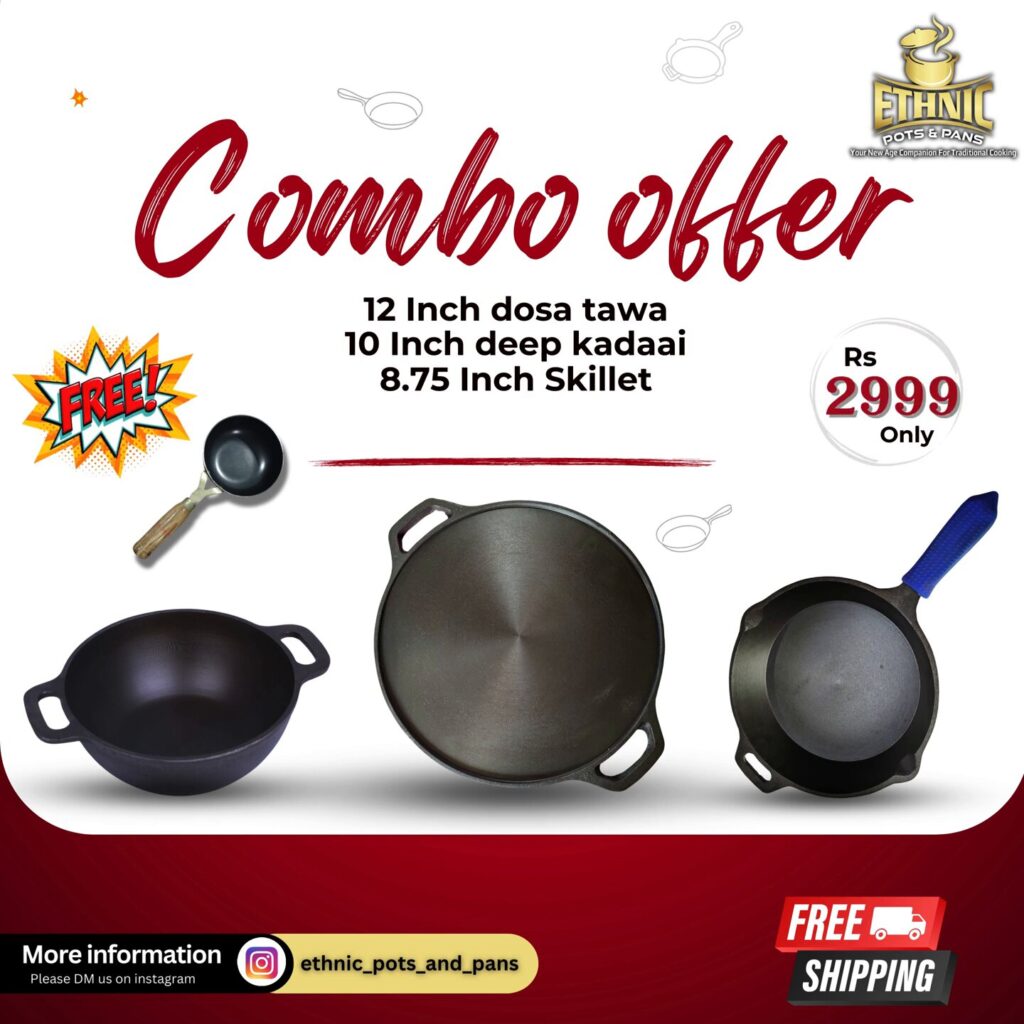
Best Cooking Essentials Combo
This combo will be your one step solution for your cast iron cookware needs. This is ideal For 4-5 members family.
Set Includes:
Pre-seasoned cast iron 8.8 Inch Skillet with heat resistant grip: Perfect for frying, sautéing, and searing.
Pre-seasoned cast iron 12 Inch double handle dosa tawa: Perfect for restaurant style crispy dosas
Pre-seasoned cast iron 10 Inch deep Kadaai: Excellent for all types of curries, fry, rice etc
Get a free sheet iron tadka pan along with this combo which adds excellent tempering to your food
View the kadaai here
View the dosa tawa here
View the Skillet here
View the Tadka pan here
Non-Stick Cookware: The Convenient Time-Saver
Ease of Use and Cleaning
Non-stick cookware is known for its ease of use and convenience. The non-stick surface allows for cooking with minimal or no oil, making it a great option for those who are health-conscious or prefer low-fat meals. Food slides right off the surface, which also makes cleaning a breeze. Most non-stick pans can be cleaned with just a soft sponge and a little soapy water, making them a convenient choice for busy cooks.
Perfect for Delicate Foods
Non-stick cookware is particularly well-suited for cooking delicate foods like eggs, pancakes, and fish, which are prone to sticking to other types of cookware. The smooth surface ensures that these foods cook evenly and without sticking, making breakfast and quick meals hassle-free.
Suggested Reading: What type of pans do chefs use
Lightweight and Easy to Handle
Compared to cast iron, non-stick cookware is lightweight and easy to maneuver. This makes it a good choice for those who prefer lighter cookware or have difficulty lifting heavy pans. Non-stick pans typically come with ergonomic handles, adding to their ease of use.
Health Concerns: PTFE and PFOA
One of the key concerns with non-stick cookware is the use of chemical coatings like PTFE (commonly known as Teflon) and PFOA (perfluorooctanoic acid). While PFOA has been largely phased out in the production of non-stick cookware, PTFE is still widely used. At high temperatures, PTFE can break down and release toxic fumes, which can pose health risks. For this reason, non-stick cookware should never be used over high heat, and damaged or scratched non-stick pans should be replaced to avoid ingesting particles of the coating.
Lifespan and Durability
The biggest downside of non-stick cookware is its limited lifespan. Over time, the non-stick coating can wear down, become scratched, or flake off, reducing its effectiveness. Even with proper care, non-stick pans typically need to be replaced every few years, especially if they are used frequently. Metal utensils should not be used on non-stick surfaces, as they can cause damage, further shortening the lifespan of the cookware.
Suggested Reading: Cast Iron vs Teflon: Which Is better?
Cast Iron vs Non Stick Cookware: A Detailed Comparison
Heat Retention and Distribution
Cast iron is renowned for its ability to retain and distribute heat evenly, making it ideal for slow cooking, frying, and baking. It holds onto heat for a long time, ensuring consistent cooking results. Non-stick cookware, while heating up quickly, does not retain heat as well as cast iron and is not suitable for high-heat cooking tasks like searing or broiling.
Cooking Flexibility
Cast iron cookware can go from stovetop to oven with ease, handling high temperatures without any issues. It’s perfect for dishes that require a combination of stovetop searing and oven baking, like frittatas or roast chicken. Non-stick cookware, on the other hand, is limited in its use, as most non-stick coatings can’t withstand oven temperatures above 500°F (260°C).
For quicker facts, read this:
Weight and Handling
Cast iron cookware is heavy, which can be a disadvantage for those who prefer lightweight cookware or have difficulty lifting heavy pans. Non-stick cookware is much lighter and easier to handle, making it more convenient for everyday use.
Long-Term Investment
While non-stick cookware is inexpensive and convenient in the short term, it lacks the longevity of cast iron. Cast iron cookware is a one-time investment that, with proper care, can last a lifetime. Non-stick cookware, however, will need to be replaced every few years as the coating deteriorates.
Choosing between cast iron and non-stick cookware depends on your cooking style, health considerations, and long-term kitchen goals. Cast iron offers unmatched durability, heat retention, and versatility, making it a worthwhile investment for those who enjoy cooking a wide variety of dishes. It may require more maintenance, but the benefits of improved flavor, long-term use, and health advantages are well worth it.
Non-stick cookware, on the other hand, is perfect for those seeking convenience and ease of use, especially for low-fat cooking and delicate foods. However, it comes with a limited lifespan and potential health concerns related to its chemical coating.
Ultimately, many cooks find that having both types of cookware in their kitchen gives them the best of both worlds. Cast iron excels in high-heat, long-cooking tasks, while non-stick is unbeatable for quick, easy meals. If you’re looking for long-term value and cooking versatility, cast iron cookware is the superior choice. For everyday convenience and low-fat cooking, non-stick cookware may be the way to go.
Resources
